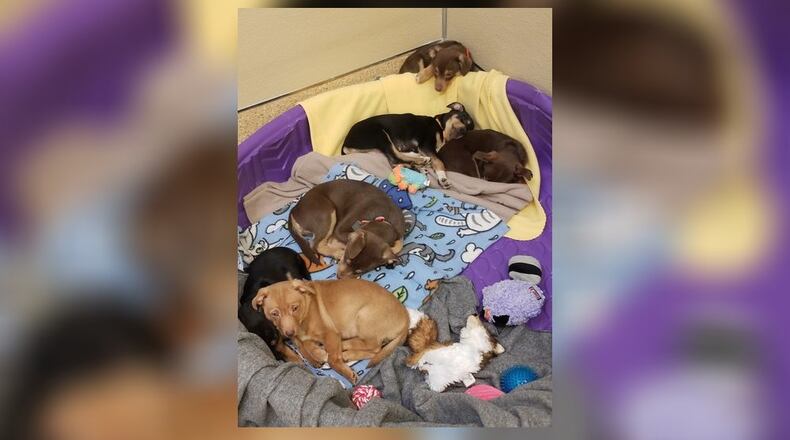Bowser said the changes may be “long lasting” even after the risks associated with COVID-19 are reduced. Teller sees PAWS continuing to follow the new policies at least through the summer.
The two organizations have seen an increase in the number of dogs and cats placed in foster care or adopted during a time when those interested in owning animals are encouraged to make appointments.
MORE ON CORONAVIRUS
• Confused about unemployment? We answer your questions.
• Living through coronavirus: 16 stories about how our neighbors are living and coping
• US restaurants expect big changes when their doors reopen
When Ohio Gov. Mike DeWine started shutting down businesses in March, Bowser said she became concerned about the future of the shelter and its animal inventory. She said in March there was “a push” to reduce the number of animals, and the process worked.
She said all of the 120 dogs and cats were placed in foster care or adopted, and 87 have remained in foster homes.
“That’s been great,” Bowser said.
She said there are 15-20 animals in the shelter, and most of them are strays waiting to be claimed. Before the coronavirus, the average stay for an animal was 60-90 days. Now, it’s four to five days, she said.
It’s been easier to place animals in foster care because more people are working from home, she said. She also has been impressed by the effectiveness of the appointment procedure that allows the organization to control the number of visitors at one time.
On the negative side, the coronavirus has led to fewer donations, Bowser and Teller said. While local residents have dropped off food and cleaning supplies, Teller said financial donations are down about 30-40 percent.
She is appreciative of the material donations but said “money pays the bills.”
Like Animal Friends, PAWS started an appointment procedure after the coronavirus hit. Teller said this reduced foot traffic and led to those serious about adopting finding the right animal. People are asked to call and request to visit a certain animal, she said.
“It wasn’t like people had nothing to do so they said, ‘Let’s go look at the dogs,’” she said. “They came here to adopt a dog or cat.”
The plan also allowed the staff to spend more time with the animals and less time as tour guides.
“Our dogs seemed calmer,” Teller said. “Things were just a little lighter. We had more quality (time) with the animals.”
Those who wanted to see an animal also were required to wear gloves and masks and have their temperature taken.
From the end of March to last week, PAWS adopted 11 dogs and placed two in foster care and 10 in foster-to-adopt because they’re waiting for surgery. She said the number of cats adopted also increased.
“That’s pretty good,” she said of the adoption number.
TELLING YOUR STORIES
We’re looking to profile people throughout our coverage area about how the coronavirus is impacting your daily life. If you’re interested in sharing your story about how you’re affected or adapting to the situation, call Journal-News reporter Rick McCrabb at 513-483-5216 or email rick.mccrabb@coxinc.com.
About the Author

